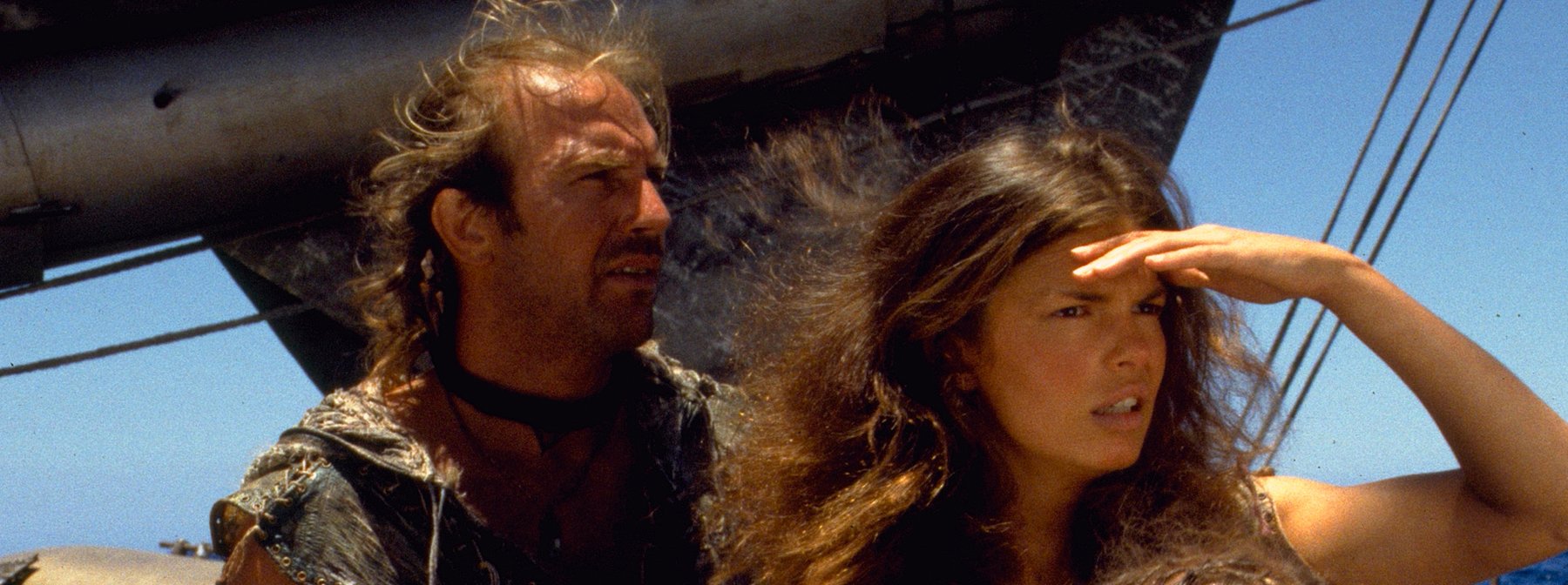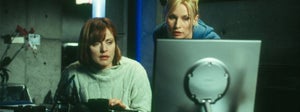
There’s something extremely satisfying about falling in love with a film that people have been telling you is rubbish for years. Kevin Reynolds’ 1995 epic spectacle Waterworld seems to be one of those movies that people love to hate. The most expensive film ever made at the time, it’s often accused of being a box office flop; a second-rate rip off with poor acting and characterisation, but watching now nearly 30 years later, it’s a swashbuckling apocalyptic action adventure that effectively sells its more ambitious ideas and gives audiences a damn good time while it’s doing it.
From the fun Universal logo gimmick where the spinning globe shows us melting polar ice caps covering the world with water, to its bittersweet ending of believable relationships and destinies fulfilled, Waterworld delivers.
The story follows Kevin Costner’s Mariner, as he traverses the open sea in a distant future Earth covered almost completely in water. He’s a mutant with gills and webbed feet set apart from much of humanity, with people holed up in sprawling atolls or pirating their way around the seas led by a suitably cruel and manic Dennis Hopper. Trading pure dirt and hydro (fresh water), the Mariner is a classic grumpy antihero, encountering various colourful characters and trying to mind his own business until the story descends around him, drawing him into a desperate fight to save those he grows to care for. Jeanne Tripplehorn and Tina Majorino play Helen and Enola, his at-first-reluctant-crew-mates, as they all negotiate rogue traders and the pirates known as ‘Smokers’ and search for the mythical ‘Dryland’ led by a mysterious tattoo on Enola’s back.
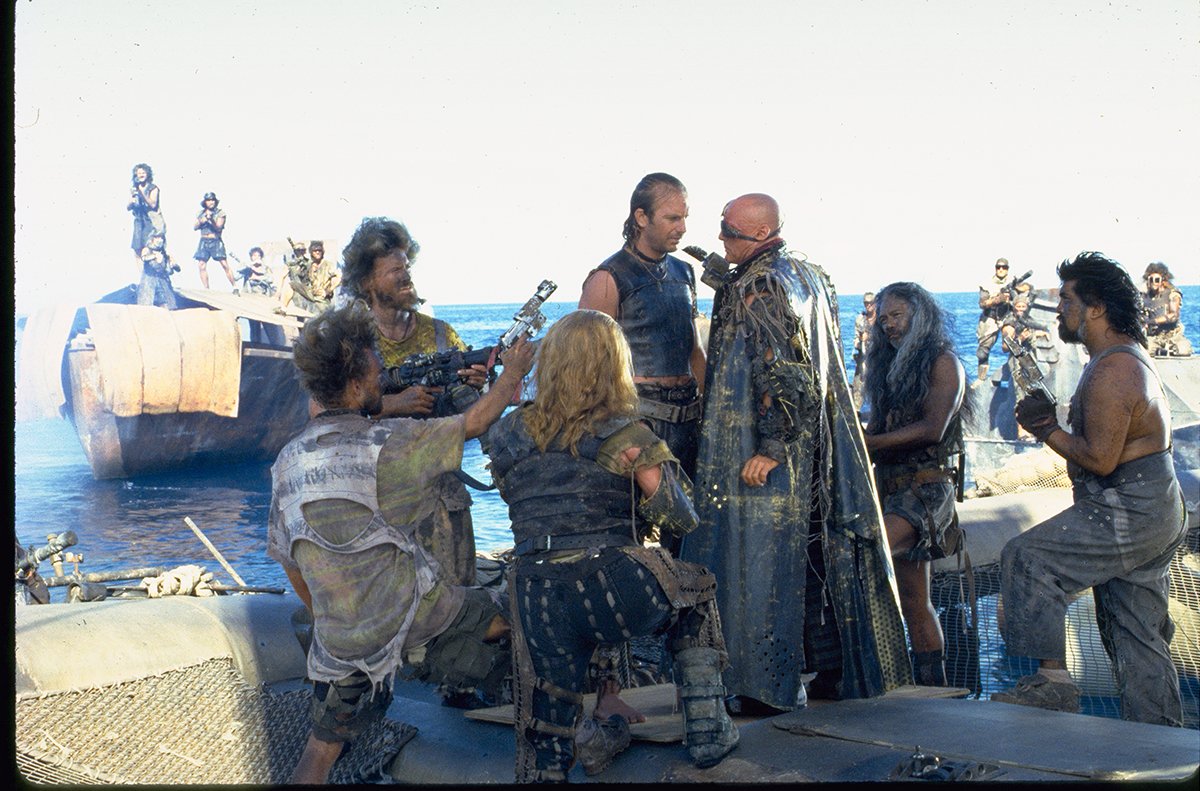
So much so post-apocalyptic drama, but there’s more here than meets the eye if you deign to appreciate it. The storytelling is much more subtle than it could have been, with a fair amount of show-don’t-tell. For example, we’re introduced to the Mariner’s world through the unspoken conservation of water: he pees in a plastic jug, filters it and drinks it, and then waters a small lime tree with the leftovers. Through this simple interaction with his surroundings, we can already tell that despite there being water water everywhere, there’s scarcely a drop to drink.
Costner’s performance is still and stoic, a true leading man by this stage in his career via other tour-de-force blockbusters such as 1990’s Dances With Wolves and the Kevin Reynolds-directed Robin Hood: Prince of Thieves in 1991, along with Oliver Stone’s JFK and 1992’s The Bodyguard. His interactions with Hopper, Tripplehorn and Majorino are all convincing and compelling, making for a satisfying melange to spend one’s time with.
Besides the entertaining and believable storytelling, the production design of the film is breath-taking. As well as massive sweeping shots of open ocean, there’s also great care shown for the smaller aquapunk details in the Waterworld. The Mariner’s boat, for example, covered in trinkets and goods, tells us so much about him before we’re shown where his various precious belongings are from (i.e. the ocean floor and submerged cities long covered and forgotten by rising waters and the humans unable to plumb their depths).
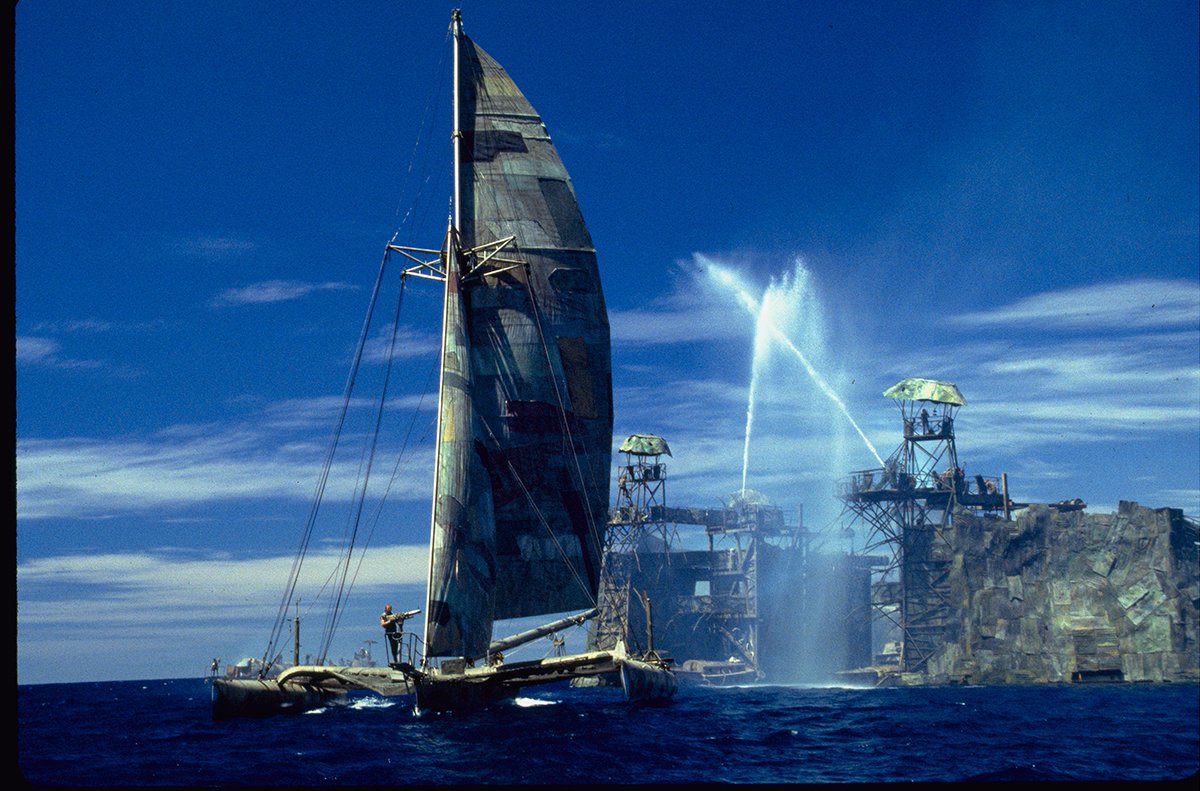
The set for the sunken cities consisted of elaborate miniature models that were shot in smoke to mimic the opacity of the water, and then Costner and Tripplehorn were shot separately using an astronaut training tank with ripple effects and bubbles adding in with CGI, along with digitally edited backgrounds of Denver, Colorado.
The action also stands up. From one-on-one underwater fights, to audacious bungee jumps, to huge explosive set pieces, Waterworld gives us one well-paced spectacle after another.
It’s well known that shooting on the ocean created some unique challenges and extended schedules and budgets beyond original plans. The film took some ground-breaking feats of engineering to bring the ambitious production design to life.
For the Smokers’ attack on the floating city, the set of the atoll was over a quarter of a mile wide and took around 1 million tonnes of steel - using up supplies on the Hawaiian islands and requiring more flown in from California, needing the Kona Airport runway to actually be extended to accommodate the heavily weighted planes. The building crew constructed the set in sections, working day and night over three months - and each section needed four cranes to lift it into the water just off of Hawaii. The atoll was put together on a rotating platform so the camera wouldn’t pick up any land and to be filmed surrounded by endless water, it needed to be towed miles away from the coast. Local weather conditions also presented problems allowing for only five or six setups of filming each day; the area was subject to 45 mph winds and suitably apocalyptic rain, blowing sets out of position and ruining shots.
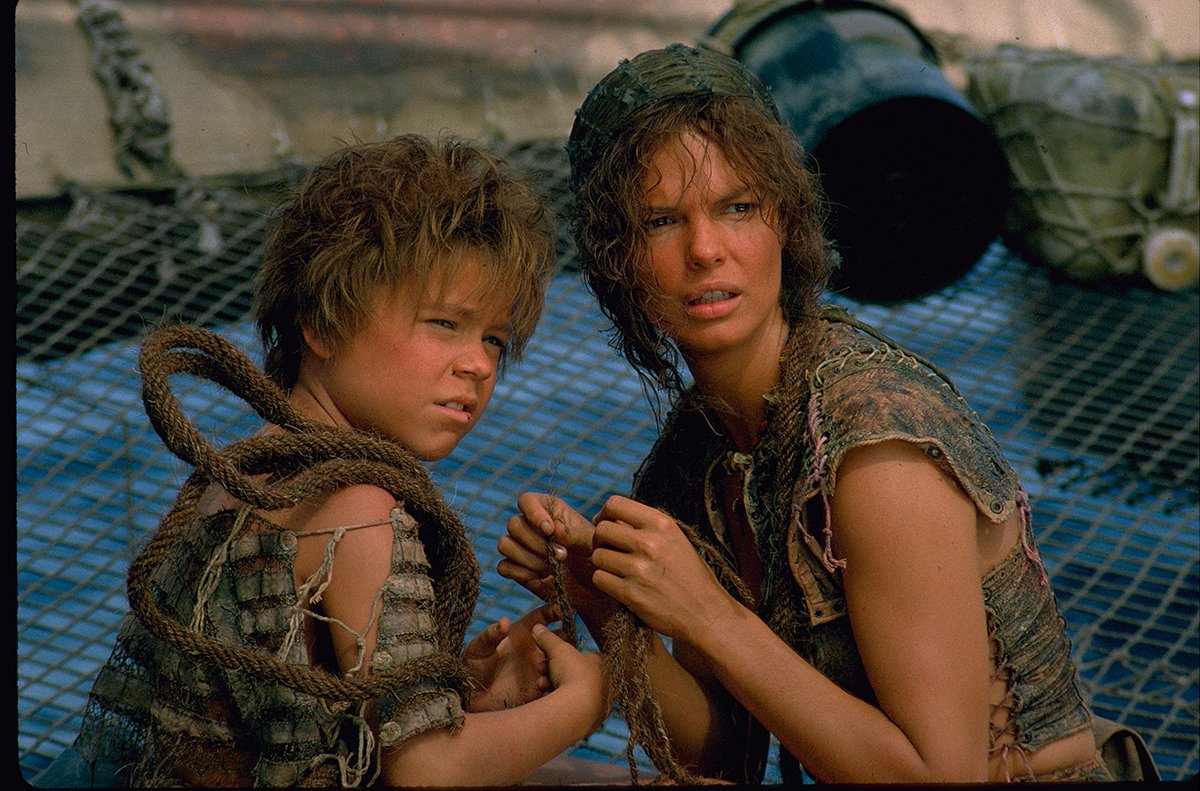
It’s also worth mentioning how, in 2023, the environmental elements of the film take on a certain extra something. “The ancients did something terrible didn’t they?”, we’re told at one point and there’s a proliferation of plastics throughout the film - obviously still going strong despite the destruction of so many historical artifacts - plus a hefty reference to the Exxon Valdez oil spill in 1989.
Even though the film is often thought of as a box office flop, it eventually turned a profit. It cost $235 million to produce and market, and took $264 million worldwide in 1995. It’s hard to imagine a film like Mad Max: Fury Road existing without Waterworld, or something like Serenity for that matter. In fact, funding for the film was secured after it was originally pitched as a children’s adventure when screenwriter Peter Rader skewed it more towards an apocalyptic Mad Max “rip-off”, with rewrites by David Twohy and Joss Whedon turning the original script into much more of a serious action-adventure film. “Serious” is even a bit of an understatement - Waterworld is far more earnest than something like Reynolds’ previous Costner vehicle, Prince of Thieves, but its phenomenal scope, awesome action, and heartfelt character interactions make it an extremely entertaining watch.

